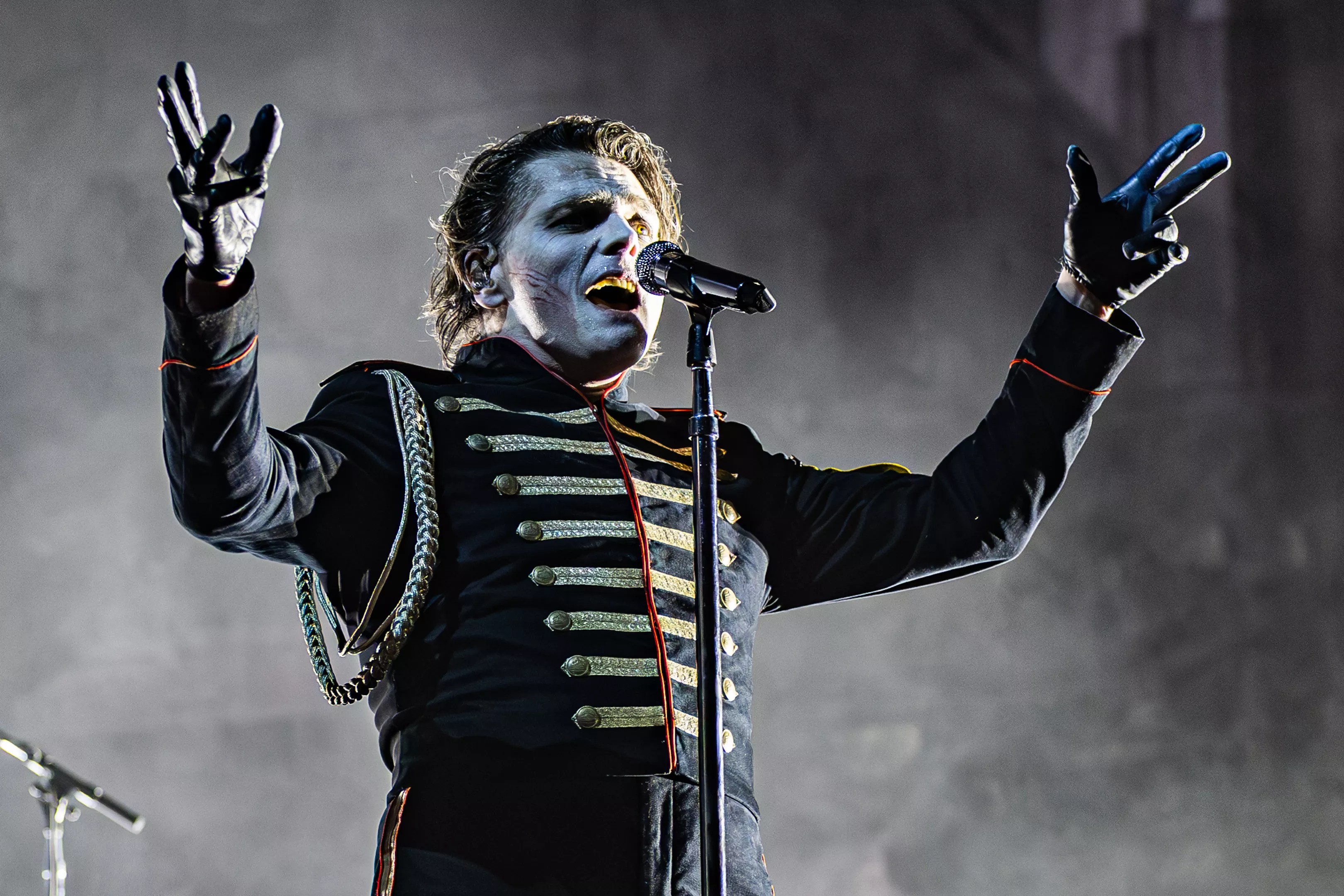
Andrew Sherman

Audio By Carbonatix
On Saturday, Aug. 2, My Chemical Romance (MCR) transformed Globe Life Field into the fictional fascist nation of Draag.
The hyper-influential pop-punk and emo band took the stage at 8:30 p.m. and followed their opening act, Garbage, with a two-set show as part of their Long Live the Black Parade Tour. The first half of the concert featured MCR playing their landmark 2006 album The Black Parade. They then transitioned into a more upbeat performance of hits from their other albums to finish out the evening (with a cover of The Smashing Pumpkins’ “Bullet With Butterfly Wings” thrown in).

Garbage, led by singer Shirley Manson, is perhaps one of the most successful products of the Madison, Wisconsin music scene.
Andrew Sherman
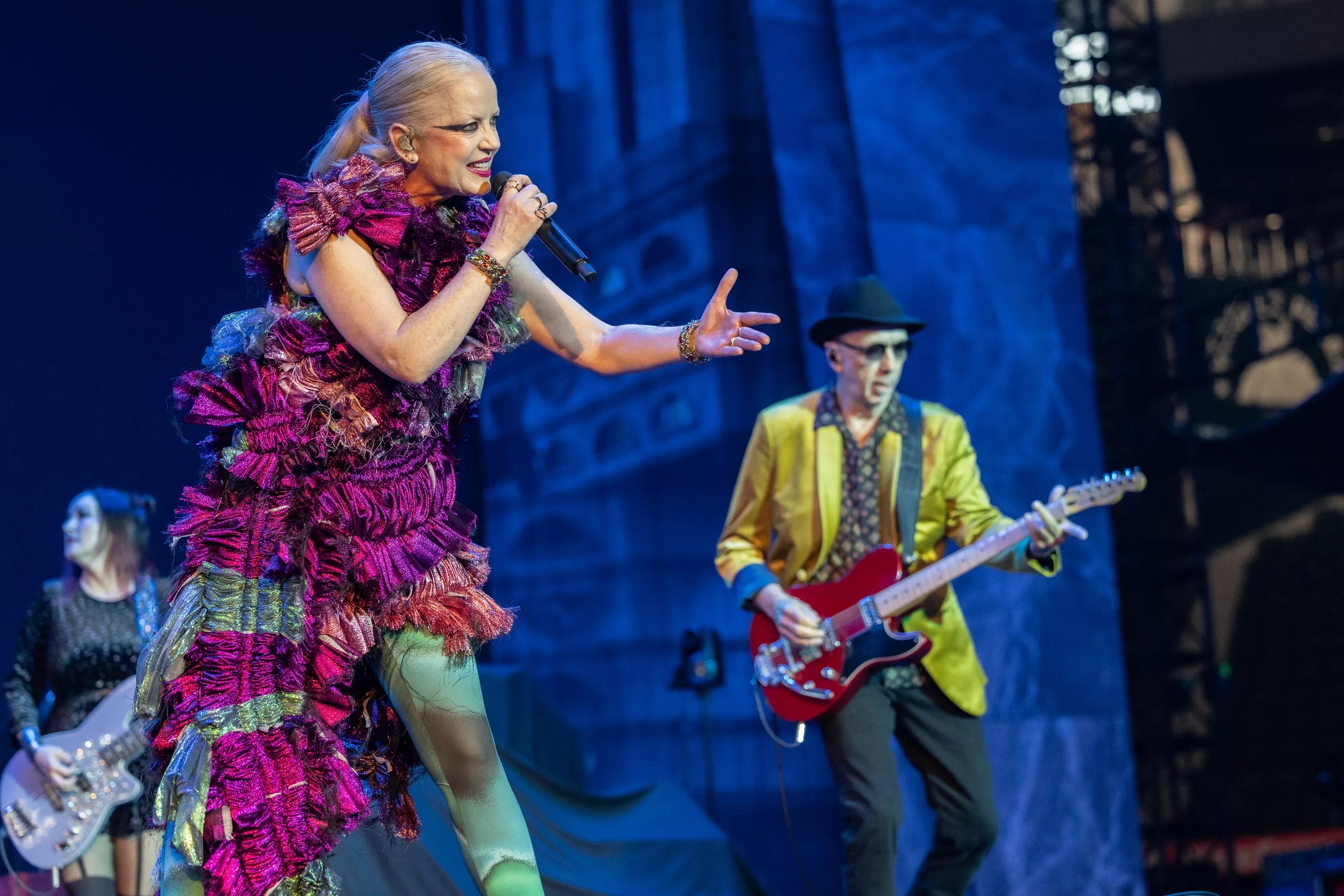
Garbage took over Globe Life Field on Saturday.
Andrew Sherman
Will you step up to support Dallas Observer this year?
At the Dallas Observer, we’re small and scrappy — and we make the most of every dollar from our supporters. Right now, we’re $14,000 away from reaching our December 31 goal of $30,000. If you’ve ever learned something new, stayed informed, or felt more connected because of the Dallas Observer, now’s the time to give back.
The overall effect was a bifurcated show that delivered a moody, operatic production of The Black Parade (with the band performing in-character as the Black Parade) before loosening the reins and jamming out with the audience, playing MCR staples like “Helena” and “I’m Not Okay (I Promise)” to a rapturous crowd.
While The Black Parade is a concept album, the story it tells is about a man dying of cancer as he nears the end of his life. For this tour, instead of literalizing that story, the band, fronted by Gerard Way, created the dystopian hellscape of Draag to parody fascist dictatorships. The setting is cheerless, filled with fire, murder and brutality. A “Great Immortal Dictator” rules over Draag, portrayed in video clips as a John Waters-type with a pencil mustache and a black cowboy hat, seated on a throne, looking disapproving.

Gerard Way with a stone-cold gaze.
Andrew Sherman
Pageantry was the order of the day, and MCR played the part of the Black Parade with gusto. Salutes were offered, letters formally delivered; Way performed one song from a podium, as if addressing Draag’s citizens at a press conference; later in the evening, he pantomimed reading a book about insects to a marionette. Flames erupted from the stage during “Mama” and a stuntman ran around engulfed by them. By the time MCR wrapped up The Black Parade with “Famous Last Words,” the flames were all around them, a screen behind them tracking the progress of a missile launched by Draag against its “enemies.” It felt like the end of the world.
Even if Draag was intentionally bleak and hopeless, it was never boring. The production design was stellar, complementing The Black Parade‘s songs, which have all but fused with the DNA of MCR’s fanbase. For this tour, they expanded and enhanced certain portions of the album, adding intros, outros, etc., while staying true to the spirit of the original work. It was incredible.
Way is a practiced showman and masterfully commanded the crowd, strutting about the stage in his military band uniform, his character playing like the demonic offspring of The Emcee from Cabaret and Heath Ledger’s Joker. At one point, the audience voted on whether four people who questioned “the vitality” of the Grand Immortal Dictator should be put to death. Red “yea” and black “nay” signs were available throughout the venue before the show, and the crowd held them high. “It’s a lot of fucking red!” cackled Way, before saying he could tell the vote was close and decided it was best to give the people what they want – ordering the criminals “executed” by firing squad on stage.

Fans holding up “yea” or “nay” signs to interact with My Chemical Romance.
Andrew Sherman
It was dark, but the audience participation, the willingness of the crowd to be acolytes of the Black Parade, made the show feel interactive, like something you could be complicit in instead of merely an observer of. More bloodshed came later in the evening, when a clown stabbed Way’s character to death on stage before doing a dance routine to The Black Parade‘s hidden track, “Blood.” The song ended with the clown detonating a suicide vest.
As odd as that all may seem, it worked. And the crowd ate it up.
People showed up for the concert with their faces painted black and white, they dressed in outfits inspired by the costumes of the Black Parade, and nearly everyone else at least got the memo that MCR is a black attire affair. From the opening of the first song until the end of the evening, every line sung by Way was echoed by thousands of voices in Globe Life Field; people danced and cheered and waved their phones around, flashlights on, encouraged by Way, who made multiple mentions of how seeing all the lights in the crowd felt like looking at the stars over Texas.
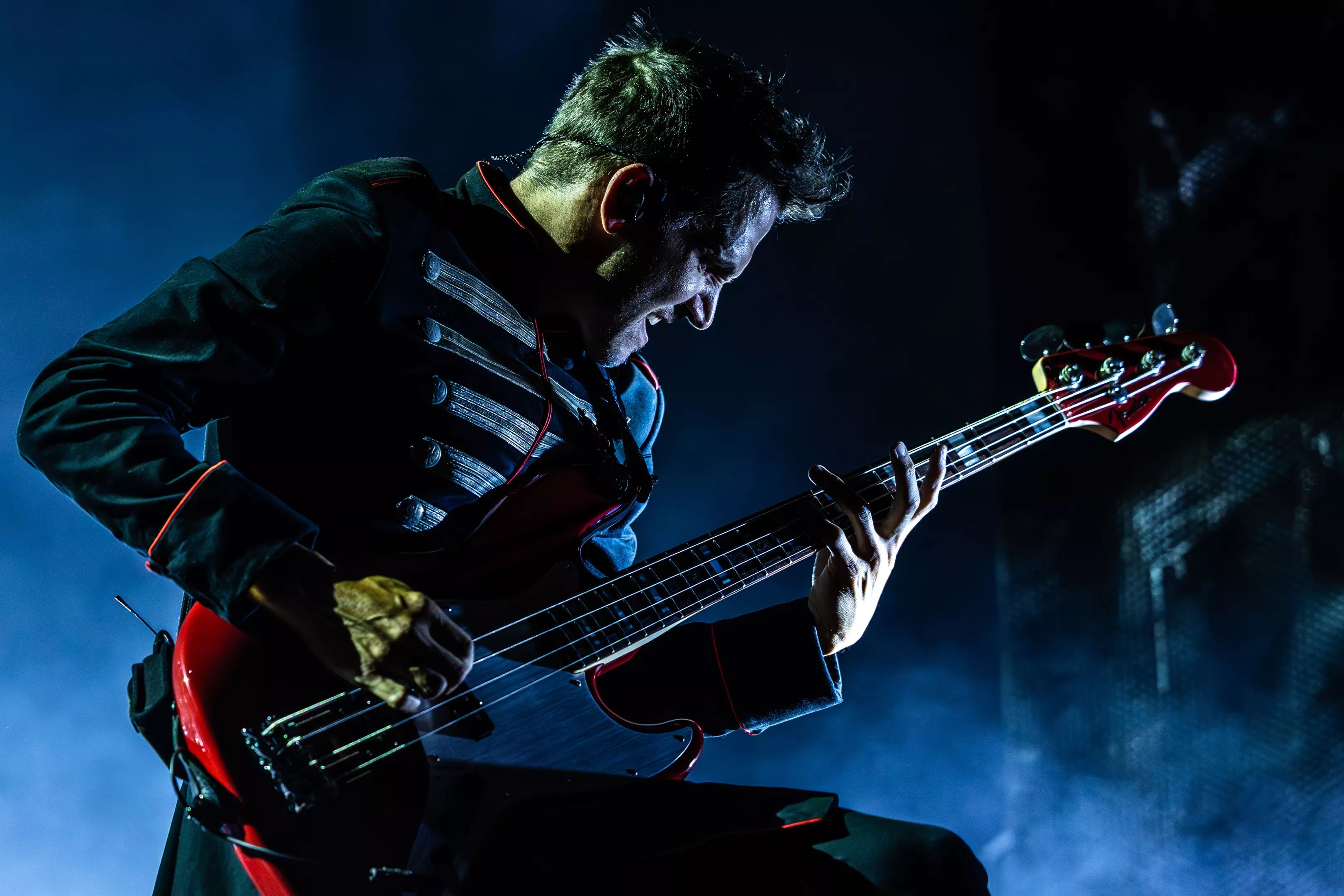
My Chemical Romance took no prisoners on Saturday night.
Andrew Sherman
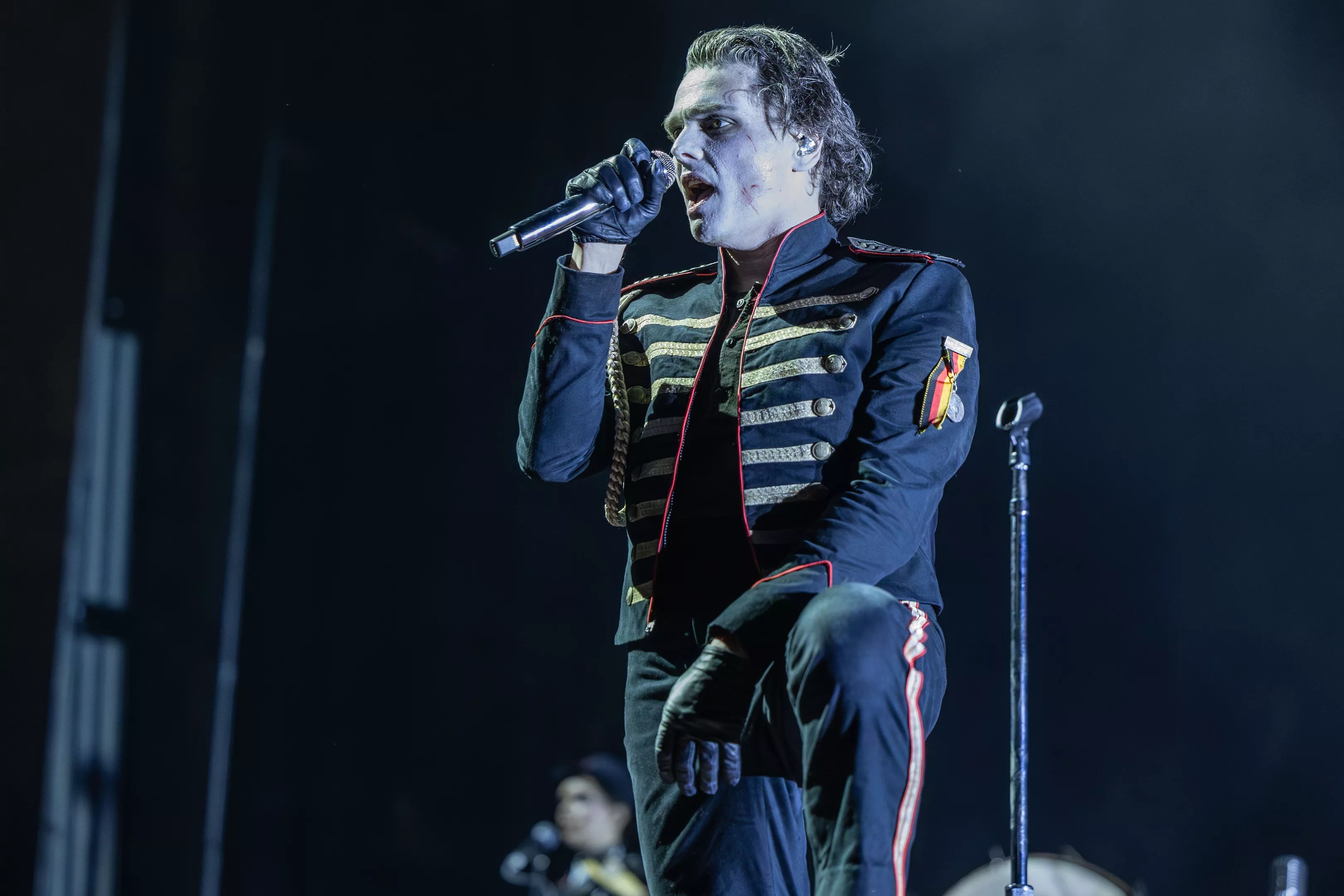
My Chemical Romance played the part of the Black Parade with gusto.
Andrew Sherman
After they finished playing The Black Parade, the band took a short break for an outfit change. Rather than leaving the audience in stunned silence in the aftermath of the symphony of chaos Way had spent the evening conducting, they brought out cellist Clarice Jensen, who played a beautiful instrumental called “From A to B” while the band’s B stage was prepped.
When MCR returned, they had stripped away the artifice of their Black Parade alter-egos. Instead of uniforms, they wore T-shirts, jackets and jeans. Way spoke directly to the audience, not as the megalomaniacal representative of a fascist dictator but as himself. Gone was the atmospheric gloom of the first set, replaced by something more relaxed, joyous, sweeter and sillier.
The second half of the show may have lacked the cohesion of The Black Parade, but it made up for that with pure energy. The audience erupted when the band launched into songs from Three Cheers for Sweet Revenge (the MCR album preceding The Black Parade); in fact, the audience erupted basically anytime someone on stage made a sound. The floor was an undulating mass of bodies, hands in the air, cameramen capturing audience members singing along with Way. At times, it felt less like people were there to be entertained than they were to worship at the altar of MCR. That’s the kind of relationship the band’s audience has to them.
My Chemical Romance has created art that has outlasted its original run, touched multiple generations and influenced the artists who came after it. For over two decades, they have been playing music that makes the unseen feel seen, and for over two hours on an August night, MCR’s fans showed the band how much that means to them.
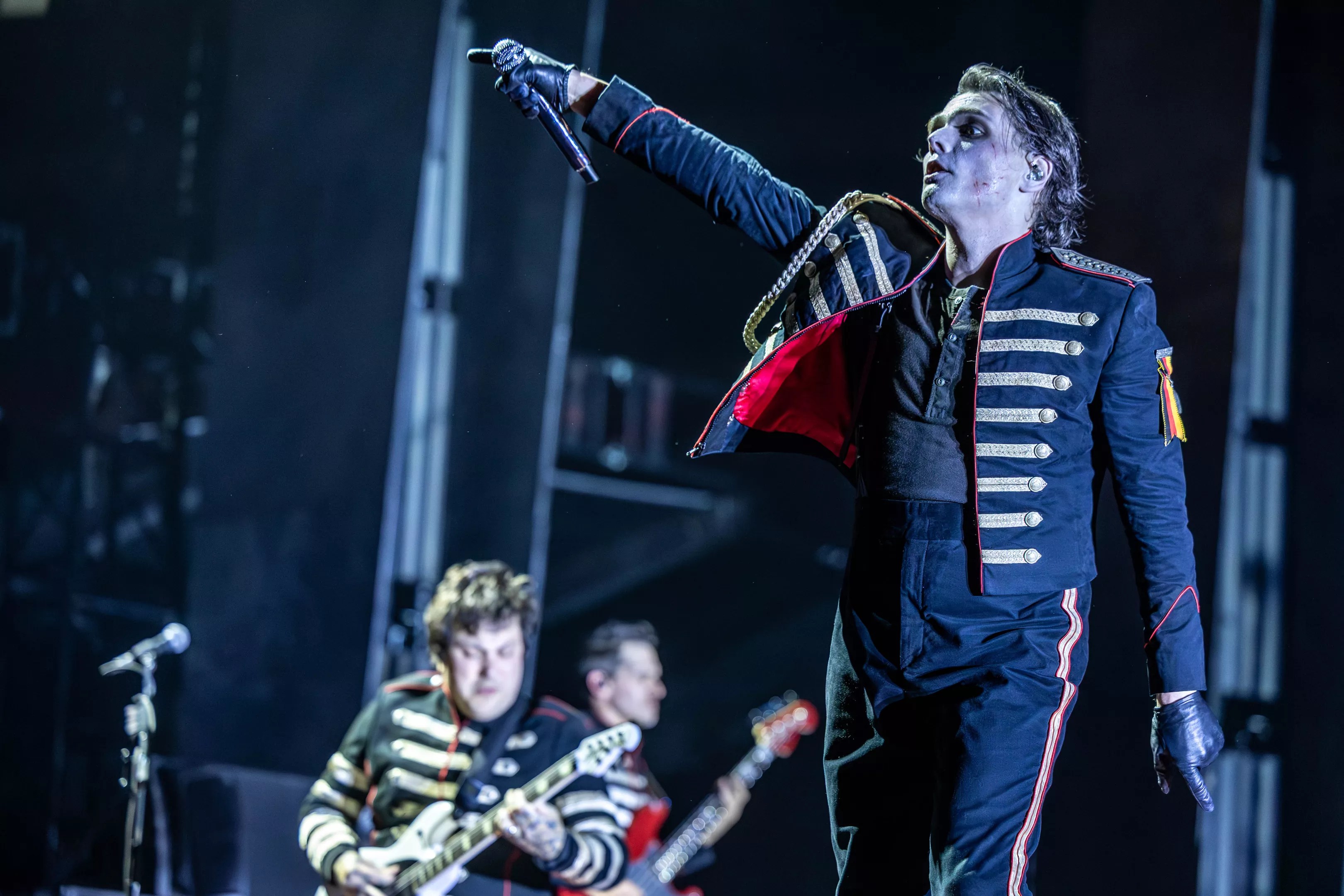
Fans sang with My Chemical Romance all night.
Andrew Sherman
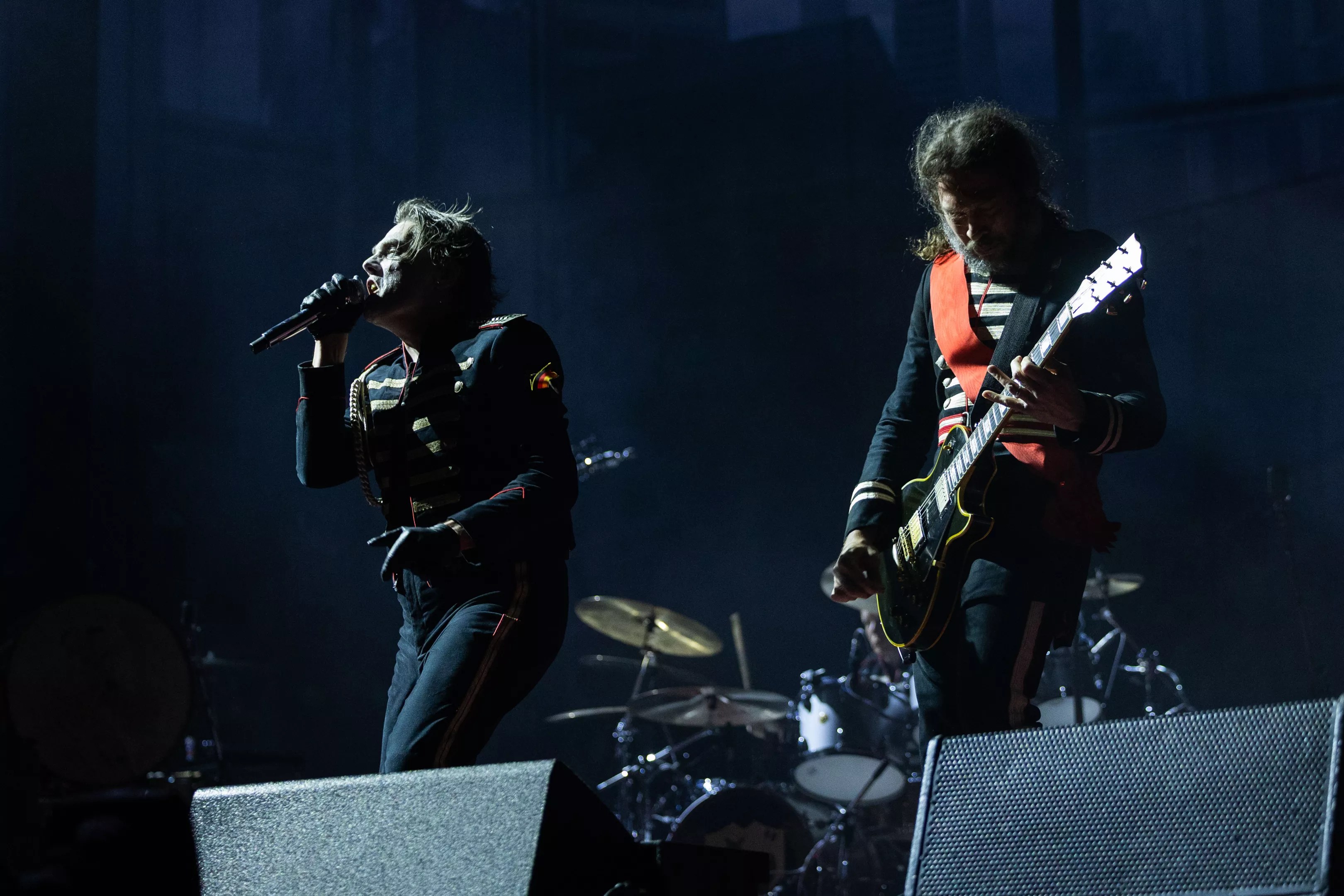
Nearly 20 years after its release, The Black Parade is still beloved by fans.
Andrew Sherman

My Chem fans came out to show love at Globe Life Field.
Andrew Sherman